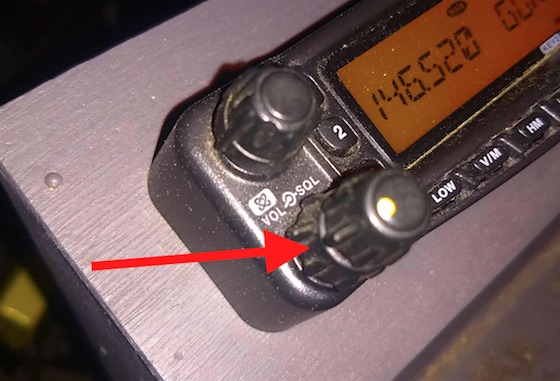
Squelch Ham Radio | The red arrow points to the squelch adjustment knob on my Yaesu FT-8900R mobile radio. You can see the acronym SQL on the faceplate. Rotating it counterclockwise opens the squelch. Rotate it clockwise and you start to tighten up the squelch so only strong stations can be heard. Copyright 2019 Tim Carter
Squelch Ham Radio – Don’t Make it Too Tight
The 2017 ARRL Handbook defines squelch succinctly:
Squelch is the circuit in FM radios that turns off the loud rush of noise with no signal present.
The squelch on almost all modern ham radios is adjustable. This is a handy feature but it can also work against you if you’re not paying attention.
Related Content
How Does Squelch Work?
In the simplest terms, the squelch circuit is like a power output knob in reverse. If you want to transmit with more power, you adjust your wattage output to a higher level.
A squelch knob allows you to reject weak signals and only hear stronger stations. Depending on how you have the squelch adjusted, you may not hear a calling station. Sometimes you want this as weak stations might be tripping your receiver with picket-fence transmissions and other bothersome audio.
Why is Squelch Important at the NEFR?
Squelch is important at the NEFR, the New England Forest Rally, or any other public service event because you need to be able to hear all the other operators who are part of your team.
One, or more, of the other operators, may be transmitting on a lower power setting using an HT. If you turn your squelch knob too far, you may block out the signal of that operator.
This could cause significant problems in case of an emergency.
What’s the Best Squelch Adjustment?
I don’t know if there’s a best adjustment, but you might want to try to open up the squelch until you hear the loud rush of noise. Then start to turn the knob the other way until the noise goes away. Turn it just another tiny bit to tighten up the squelch a bit more.
This setting allows you to receive weak stations that may have important information. You can always tighten the squelch even more but realize you may not hear all you want to hear.
